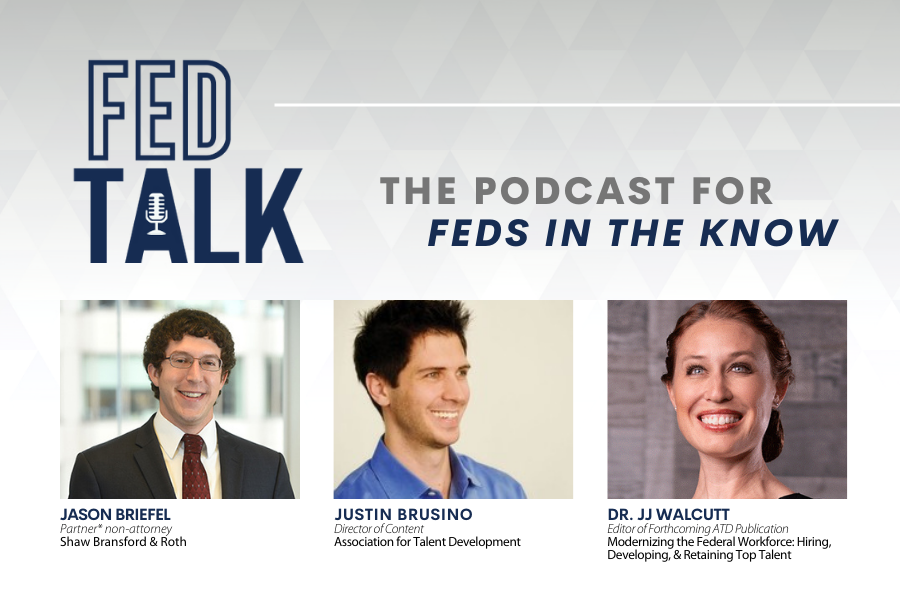Lessons from Business on Talent Development Strategies
Finding and keeping talent is a major challenge for both the government and the private sector, especially for positions that require certain technical skills. The latest episode of FEDTalk focuses on ways the government and private industry can share tips and best practice for hiring, as well as lessons the private sector may hold for the government.
One of the big topics of discussion was the move toward a skills-based hiring system, where applicants are judged based on their skillsets and experience, instead of their college degree.
Host Jason Briefel, Director of Public Affairs at Shaw, Bransford, & Roth PC was joined by Association for Talent Development’s (ATD) Director of Content, Justin Brusino and Dr. JJ Walcutt, editor of the ATD publication, “Modernizing the Federal Workforce: Hiring, Developing, & Retaining Top Talent.” The ATD is the world’s largest organization dedicated to serving individuals whose mission is to develop talent in organizations. It focuses on both employee learning and talent development.
The conversation took place shortly before the ATD Conference in Washington.
The panelists discussed some of the differences between the government and private sector when it comes to talent development. Walcutt, who has worked in both sectors, stated that one of the big differences is that the government deals in policies that are not updated quickly, logically, or in helpful ways.
“That is a significant piece of the puzzle that we have to attend to that is not a focus in industry,” said Walcutt.
Walcutt noted that industry can be more “agile” than government from a sales and talent development perspective. However, she points out that government can “borrow from a lot of the information that is happening” and that it can work within the structure, policies, and rules so that “innovation that is happening externally can be digested and applied internally.” Walcutt emphasized that it’s critical to “borrow, borrow, borrow” from organizations leading in talent development.
Skills-Based Hiring
Regarding skills-based hiring, Brusino noted that the Covid-19 pandemic set both the government and private-sector back, noting that progress was being made on skills-based hiring in 2019 before the pandemic sidelined that progress and forced everyone into a remote work conversation.
Nevertheless, Brusino said that “industry hasn’t figured out skills-based approach either,” and that both the public and private sector should work together to find the best approaches to skills-based hiring.
Getting Out of the Silo and Building Bridges
Walcutt also pointed out that many government workers are still in silos, with their hands tied by various policy requirements while private sector workers who come into the government are not aware of the various learning and policy requirements. She noted that it’s incumbent on people who have both public and private sector experience to “act as a bridge” to connect both worlds, bring perspectives together, and get started on the next wave of talent development.
AI Implications
The guests also discussed was the implication of artificial intelligence (AI) on the federal workforce. Brusino noted that AI is dominating conversations and that “people are wrestling with what does it mean for me and my role.”
Walcutt stated the government faces barriers that don’t exist in the private sector when it comes to pivoting employees toward AI, such as the lack of a policy to require employees to learn something new.
“The solution is not as difficult as creating the opportunity for it to be implemented,” said Walcutt.
You can stream the show online anytime via the Federal News Network app and listen to the FEDtalk on all major podcasting platforms. FEDtalk is a live talk show produced by Shaw Bransford & Roth P.C., a federal employment law firm. Bringing you the insider’s perspective from leaders in the federal community since 1993.






